Hello friends of Steemit, like all my publications, I also bring you a medical problem, which is causing the loss of vision to a high degree of people, the problem is a little complicated and maybe you have already heard it. I hope everyone can understand it.
In most cases, glaucoma is associated with a higher than normal pressure inside the eye, a condition known as intraocular hypertension. However, it can also occur when the intraocular pressure (IOP) is at normal levels. Left untreated or controlled, glaucoma causes loss of peripheral vision and can lead to blindness.
According to estimates by the World Health Organization in the early 1990s, the number of people in the world with high intraocular pressure would be 105 million, new cases of glaucoma are identified at around 2.4 million per year and the number of blind people due to this disease is 8 million.
Let´s Start.
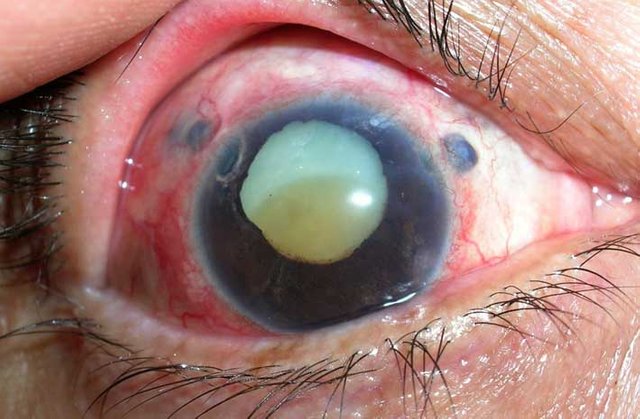

What is glaucoma?
Glaucoma is an ocular disease that is generally characterized by the pathological increase of intraocular pressure due to the lack of drainage of aqueous humor and has as its final common condition an optic neuropathy characterized by the progressive loss of nerve nerve fibers. optical and changes in its appearance.
A little difficult to understand, here I explain it better this disease usually occurs when the fluid pressure inside the eyes slowly increases and damages the optic nerve. It is possible that at the beginning there are no symptoms. Without treatment, people with glaucoma will lose peripheral (lateral) vision. They feel they are looking through a tunnel. Over time, this tunnel vision (the visual field) can decrease and lead to blindness.
The optic nerve is made up of one million nerve fibers, which connect the retina to the brain. The retina is a tissue sensitive to light, located in the lower part of the eye. It is necessary to have a healthy optic nerve to have good vision.

Glaucoma has two very important characteristics
Chronic open-angle glaucoma
The iridocorneal angle is normal. The evolution is slow, there are no apparent symptoms, but the vision deteriorates progressively, so it has been called "The thief of sight."
This is the most common type of glaucoma. It occurs gradually, when the eye does not drain the fluid as it should (similar to a clogged drain). As a result, the eye pressure increases and begins to damage the optic nerve. This type of glaucoma is not painful and does not cause any change in vision at the beginning.
Some people may have optic nerves sensitive to normal eye pressure. This means that your risk of glaucoma is higher than normal. It is important to have frequent eye exams to detect early signs of optic damage.
Closed angle glaucoma
This type occurs when a person's iris is very close to the angle of drainage in the eye. The iris can block the drainage angle. This is similar to if there was a piece of paper on the drain that covered the sink. When the drainage angle is completely blocked, the eye pressure increases rapidly. This is called acute attack. It is a true eye emergency and you should call the ophthalmologist immediately; otherwise, you could go blind.
These are the signs of an acute attack of angle-closure glaucoma:
- The vision suddenly becomes blurred
- You have severe pain in your eye
- Have headache
- You have a stomachache (nausea)
- Vomiting
- See rings or halos of rainbow colors around the lights
Many people with angle-closure glaucoma develop it slowly. This is called chronic angle-closure glaucoma. At first there are no symptoms, so they do not know they have it until the damage is severe or they suffer an attack.

What methods are used to detect glaucoma?
To diagnose glaucoma, it is necessary to evaluate the ocular pressure, but this is not the only factor to be taken into account: the optic nerve must also be studied, both from an anatomical and functional point of view.
I will explain each of the most important diagnoses.
- Pachymetry: This test is used to measure the thickness of the cornea and in this way correct the measurement errors of the ocular pressure given by the resistance differences between the thin corneas and the thick corneas.
- Gonioscopy : It measures the iridocorneal angle and allows the classification of glaucoma in its two classic forms, open angle or closed angle.
- High resolution ultrasound : allows to study the structure of the eye, the anterior chamber, the ciliary processes and the optic papilla.
- Biomicroscopy : uses a fundamental instrument called slit lamp, which allows to see the very enlarged details of the eye and examine the bottom of the eye and the optical disc in three dimensions with the help of special lenses.
- Applanation tonometer : allows to take the ocular tension in millimeters of mercury. Usually, it is incorporated into the slit lamp. The most used tonometer in the world is the Goldmann tonometer. There are tonometers that obviate the error factor of corneal thickness. There is the Pascal tonometer, which does not take into account the thickness of the cornea and in this way an intraocular pressure is obtained that is not affected by this parameter. Glaucoma perimetry: its purpose is to verify the amplitude of the visual field. At first,

Patient care
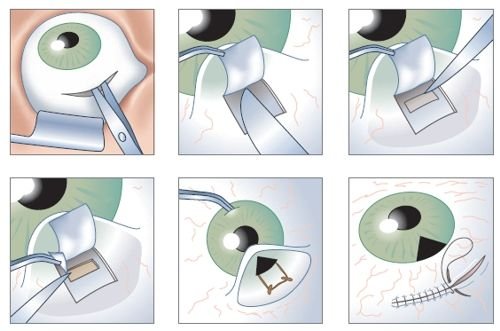
Patients with typical lesions of the optic nerve and campimetric defects compatible with glaucoma are treated independently of the intraocular pressure. The reduction of intraocular pressure is the only clinically proven treatment. For chronic glaucomas in adults and children, intraocular pressure should be reduced by at least 20 to 40% of the above values.
There are 3 methods available: medications, laser surgery and conventional surgery. The type of glaucoma determines the appropriate method or methods. The drugs and most of the laser interventions (trabeculoplasty) modify the secretion of aqueous humor and its drainage. Traditional surgery operations (eg, protected filtering procedures [trabeculectomy] or drainage device implants [bypass tubes]) establish a new drainage path between the anterior chamber and the subconjunctival space. Newer incisional surgeries try to improve trabecular or uveoscleral output without creating a full-thickness fistula.
Each of these procedures is very complex and extensive and I do not want to make a difficult publication for the understanding as I had stressed before. then I will only explain the surgery that until now is the best and the most used.
Both laser and traditional surgery are used to treat glaucoma. Laser trabeculoplasty is used to treat open-angle glaucoma. Argon or Nd: YAG is used in the laser that is applied to the trabecular network to stimulate the opening of the ducts and thus increase the flow of aqueous humor. Peripheral laser iridectomy is used in patients with angle-closure glaucoma. In it, the laser points to the iris to make an opening in it. This opens a new way by which the aqueous humor can pass from the posterior chamber to the anterior chamber.

Relevant information
There is no cure for glaucoma, but it can be controlled. Immediate treatment in the first stage can help protect vision loss.
Researchers from the United Kingdom discovered that the performance of sports activity seems to provide a long-term benefit, decreasing the incidence of low-pressure ocular perfusion (OPP), which is an important risk factor for glaucoma. OPP is a mathematical value that is calculated using the intraocular pressure of the eye and its systemic arterial pressure.
The results showed that participants who had performed moderate physical activity for approximately 15 years before the study had a 25% lower risk of developing low OPP that could favor glaucoma.
"It seems that OPP is largely determined by the state of the cardiovascular system, "said study author Paul J. Foster, MD, PhD, of the Institute of Ophthalmology at University College London." We can not comment on the cause, but there is definitely an association between a sedentary lifestyle and factors that increase the risk of developing glaucoma".
"Maintaining an active lifestyle seems to be effective in reducing the risk of developing glaucoma and many other serious health problems," concluded Dr. Foster.
In addition to regular exercise and maintaining an active lifestyle, you can also reduce the risk of glaucoma by avoiding smoking, maintaining a healthy weight and a healthy and varied diet.

conclusion
Glaucoma vision loss first affects the peripheral part of the field of vision. The loss of moderate or severe vision can be verified by the patient when evaluating his peripheral vision. This can be done by covering one of the eyes and examining the vision in the four corners of the visual field in terms of clarity and clarity, then the test is repeated with the other eye. Very often, the patient does not detect loss of vision until he suffers "tunnel vision". If the disease is not treated, the field of vision will close more and more, the central part will darken and eventually degenerate into total blindness in the affected eye.
Glaucoma is a disease in which the sequelae are irreversible, therefore, as first-level physicians we must be completely sure of the knowledge about the disease to help patients have a lesser impact on daily life since then, if there are sequelae, the patient must be sent to therapies so they can live with these sequels, as well as to help their family to understand the various pathologies that will derive from it, such as depression, as well as being a disease. It is estimated that around 70 million people have glaucoma, of which 10% suffer from bilateral blindness, it is important to refer them in time and know how to diagnose them.

Information reference
- https://medlineplus.gov/spanish/glaucoma.html
- http://www.msdmanuals.com/es-ve/professional/trastornos-oft%C3%A1lmicos/glaucoma/aspectos-generales-del-glaucoma
- https://www.aao.org/salud-ocular/enfermedades/que-es-la-glaucoma
- http://www.monografias.com/trabajos92/glaucoma-angulo-cerrado/glaucoma-angulo-cerrado2.shtml
- https://nei.nih.gov/health/espanol/glaucoma_paciente
- https://es.wikipedia.org/wiki/Glaucoma
- <>Eugenio Maul de la Puente: <>Glaucoma<>, Catholic University of Chile, 2002
- Gudmar Thorleifsson, et al. Common Sequence Variants in the LOXL1 Gene Confer Susceptibility to Exfoliation Glaucoma
- American Academy of ophthalmology: Glaucoma
- Dr. Mauricio Turati Acosta; www.glaucoma.org.mx
- muñoz-negrete fj1, pérez-lópez m2, won kim h-r2, rebolleda g1; new developments in glaucoma medical treatment; arch soc esp oftalmol 2009
Video: glaucoma closed angle vs open angle

Disclaimer: In my blog, I'm stating my honest opinion as a researcher, not less and not more. Sometimes I make errors. Discuss and disagree with me - if you are bringing the better arguments, I might rethink. Thanks.@caracasfrases
|| @utopian-io || @anomadsoul || @acidyo || @ocd-resteem || @steemstem || @vortac || @cervantes || @hendrikdegrote || ¡Vote for witness! Here: https://steemit.com/~witnesses


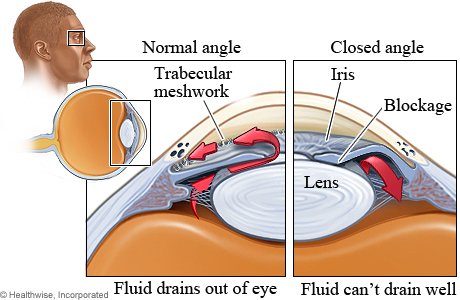
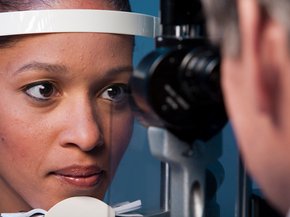
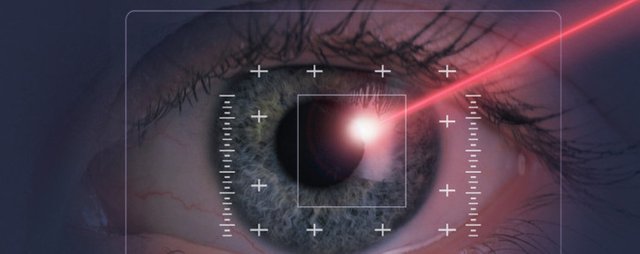
Hi, @caracasfrases. Good article indeed. By the way, there is a condition called normotensive glaucoma which entails a glaucomatic event with a normal intraocular pressure (below 21 mmHg).
p/s: Open-angle and angle-closure glaucoma are not characteristic but classification or type of glaucoma.
Downvoting a post can decrease pending rewards and make it less visible. Common reasons:
Submit
Yes, it's a pretty complete post where I wanted to make everything understood about this disorder.
Downvoting a post can decrease pending rewards and make it less visible. Common reasons:
Submit
You got a 100.00% upvote from @stef courtesy of @caracasfrases!
Downvoting a post can decrease pending rewards and make it less visible. Common reasons:
Submit
Muy interesante, quisiera saber si el uso de lentes de contacto influye en una persona con hipertensión del ojo para que se forme el glaucoma?
Downvoting a post can decrease pending rewards and make it less visible. Common reasons:
Submit
No influye en lo absoluto.
Downvoting a post can decrease pending rewards and make it less visible. Common reasons:
Submit